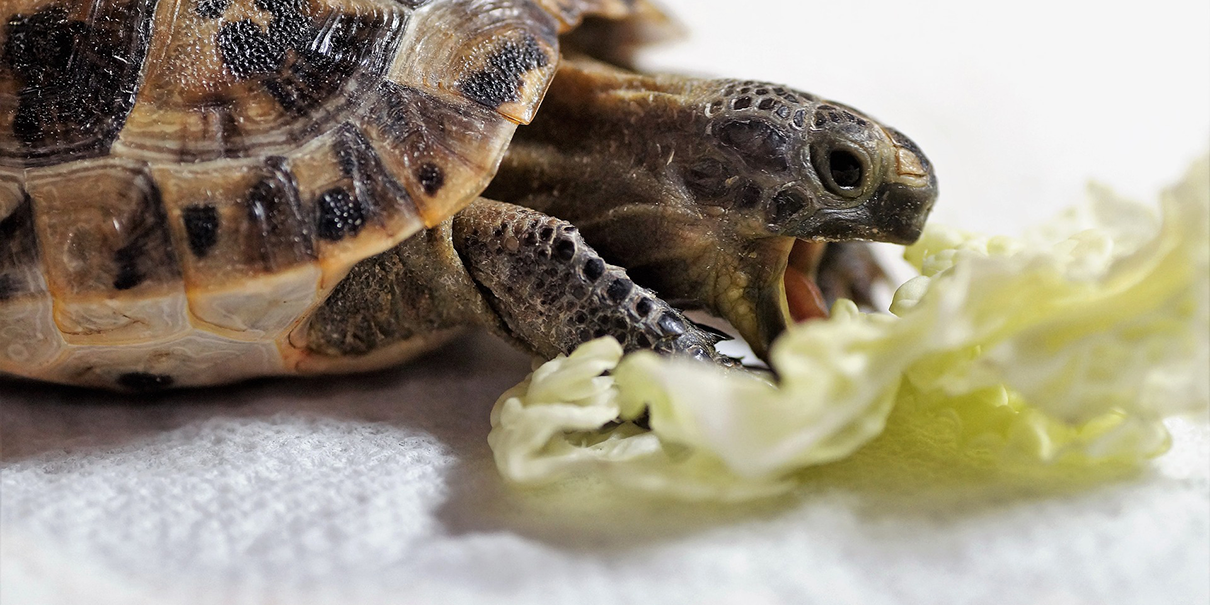
The Slow Down On Turtle & Tortoise Care
Care
Reptile
01/05/2023
Not your average pets, turtles and tortoises are fascinating creatures that aren’t particularly complicated to care for. With a little time and the right equipment, you can enjoy the beauty and companionship of turtles or tortoises for many years.
In New Zealand, pet turtles are usually the red-eared slider variety, so named because of the bright orange/red markings on each side of their heads. Tough and resilient, they are good turtles for first-time reptile owners. But other common varieties include snakeneck turtles, box turtles and reeve's turtles. Although tortoises are less common there are still a variety of species of tortoises that can be kept in New Zealand as pets including the Greek spur-thighed tortoise and the Hermans Tortoise.
It is important to buy your turtle or tortoise from a reputable breeder or specialist pet shop. With a possible lifespan of 25 to 40 years for turtles and up to 100 years for tortoises, choosing to keep these reptiles as pets is a decision not to be taken lightly. If you opt to look after one of these beautiful creatures, a decent-sized enclosure that is kept clean, and a healthy, varied diet are the basis of caring for your new pet.
Home sweet home
Turtles can grow to be 13-28cm in length so they will eventually need a relatively large enclosure. An aquarium (75 x 45 x 45cm) is suitable for a couple of hatchling sliders, but this would only last about six months. Turtles cannot be kept in a fish bowl. Instead, a pair of turtles 15cm across the upper shell will require a minimum tank size of 120 x 60 x 60cm.
An outdoor enclosure is the best place for your turtles or tortoises – one with water to swim in (if you have turtles), rocks to sunbathe on and some shelter under which to keep cool. Tortoises are pretty strong and like to burrow and climb, so their enclosure needs to have walls buried underground so there’s no chance of escape, and to prevent other animals from bothering your pet.
If you are going to keep your turtle in an aquarium, cleanliness is very important. Turtles are messy eaters and the water needs to be changed regularly. The provision of a good filter is essential, and their drinking water should be kept separate from their swimming water. Plenty of natural light is good, plus UV bulbs and a heat lamp. The ideal temperature in an aquarium should be around 24°C. Line the aquarium with gravel, if anything – don’t use tree bark or wood chips as they get contaminated easily – and decorate with non-poisonous plants.
Don’t forget that young turtles will need a heater for at least the first year as youngsters often die in their first winter if kept outdoors in New Zealand (especially in the South Island!). Turtles are very good at breaking aquarium heaters so make sure you invest in a heater guard as well. Tortoises can be aggressive to their roommates, especially two males in a small enclosure, so keep them separate to prevent injury.
Dinnertime!
A healthy, balanced diet for turtles consists of a wide variety of high fibre foods, from mealworms to alfalfa. Turtles are generally omnivores, eating mostly a mixed diet that consists of protein sources such as crickets, mealworms or other insects as well as commercial turtle food such as pellets or flakes. Turtles also need vegetables to stay healthy 80% of your turtles diet should be made up of leafy greens such as kale or spinach. They should not be fed table scraps and it is important to not overfeed them and remove any uneaten food that remains a couple of hours after feeding.
Turtle food bought from a pet shop contains essential vitamins and minerals including calcium, which is needed for the development of the shell. A poor diet results in a soft shell and a lethargic pet.
Tortoises are herbivorous, meaning they eat lots of fruit and veges. Their diet should replicate wild foraging with a range of leafy greens such as dandelion, spinach, rocket, kale and watercress. Their diet should also be supplemented with smaller quantities of vegetables such as broccoli, carrots and cauliflower and some fruits like apples. grapes and strawberries.
Both species should be fed once a day at the same time. Hatchlings should be fed twice a day, also at the same time each day. Calcium is important for both turtles and tortoises. So it is vital that you dust your pet’s food with a calcium powder twice a week to ensure they have all the nutrients they need.
Happy & healthy
Your pet should be alert and active with a hard shell in a smooth curve. If you take proper care of your turtle or tortoise by providing excellent housing, nutrition, lighting, and heating, it is unlikely to become ill or injured, but there are a couple of things to look out for. These include soft shell syndrome – a result of not enough light; fungal infections – a cotton-like layer on the shell, eyes or mouth; and respiratory infections – a runny nose, wheezing, lethargy and loss of appetite, all due to an environment that is too cold. If you see any of these symptoms in your pet, make sure you take it to your vet for treatment.
Play time
Although they can become tame and recognise their owners, turtles and tortoises are not particularly cuddly pets. Some owners say they enjoy being stroked or having their tummy scratched, but mostly they are just fascinating to watch. Most will come to recognise you as a source of food so will eagerly paddle or plod to a position where they can greet you.
Turtles don’t like being taken out of water – it is best to let them come to you, and when they do, pick them up using both hands, one on each side of the shell, between the front and back legs. It’s unwise to pick up a turtle using just one hand; turtles are quite good at freeing themselves with a bit of wiggling, kicking, clawing and biting. Some are surprisingly slippery, too!
It’s very important to wash your hands after handling your pet, as they can carry salmonella, which makes humans sick.
Bringing any pet home requires a lot of planning and preparation. It’s not an option to suddenly decide they’re too much trouble and release them into the wild. Turtles and tortoises in the waterways or parks of New Zealand would cause great harm to plant and animal life, including small fish, and they probably couldn’t fend for themselves. Make sure you and your family are prepared to take care of these beautiful creatures and you’ll enjoy their company for many years.
Turtle or tortoise?
The biggest operational difference between tortoises and turtles is that tortoises are unable to swim; indeed, they cannot float, whereas turtles can. In general, turtles live in or near the water and swim by holding their breath underwater. Tortoises live primarily in dry regions, and are built for storing their own water supply and walking on sandy ground.
Turtles’ front feet are webbed with streamlined back feet to help them swim. They have flatter backs than tortoises, and may spend all or part of their lives underwater.
Tortoises live entirely above water, only venturing into water to clean themselves or to drink. In fact, they could drown in a deep or swift current. Their feet are hard and scaly so they can crawl across sharp rocks and sand. Tortoises often have claws to dig burrows to hide in during hot, sunny weather or for sleeping. Their shell forms a rounded dome, allowing the tortoise’s limbs and head to withdraw inside for protection.
Turtle & Tortoise Trivia
Turtles and tortoises have hard shells made up of around 60 bones covered by plates called scutes. The shell is part of its skeleton, attached to the spine and the rib cage so the animal cannot crawl out of it. They can feel pressure and pain through their shells, just as you can feel pressure through your fingernails. Some can pull their heads, legs, and feet inside their shells.
The earliest known turtles date back 215 million years ago, making turtles one of the oldest reptile groups and a more ancient group than lizards and snakes.
The oldest tortoise ever recorded, almost the oldest individual animal ever recorded, was Tui Malila, who was presented to the Tongan royal family by Captain Cook shortly after its birth in 1777. Tui Malila remained in the care of the Tongan royal family until its death by natural causes in 1965. This means that Tui Malila lived to 188 years old!
Turtles and tortoises do not have ears, but they can feel vibrations, and turtles can feel changes in water pressure that tell them where food or a predator might be. They also have a good sense of smell, which helps them find food.
Turtles and tortoises don’t have teeth. Instead, their mouths have a hard, sharpened edge that they use to bite with.
The most common turtle and tortoise breeds in NZ:
Turtle
- Red-eared Slider
- Snake-neck
- Box (Terrapene)
- Reeves
Tortoise
- Greek Spur-thighed
- Hermans
- Yellow footed
- Red foooted

Written by The Pet.co.nz
Team
Written by The Pet.co.nz Team
A team of specialists with backgrounds in animal nursing, animal care, and all things pet related.